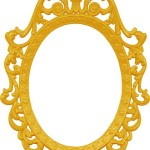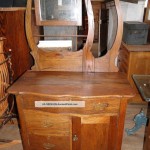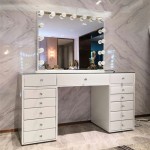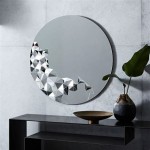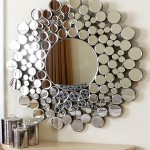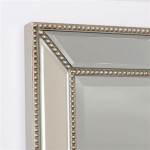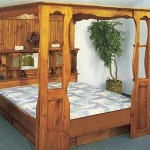How High Should a Mirror Be Hung Above a Bathroom Vanity?
Determining the ideal height for a bathroom mirror involves considering several factors, including the height of the individuals using the space, the size of the mirror, and the height of the vanity. Proper placement ensures functionality and enhances the overall aesthetic of the bathroom.
Key Considerations for Mirror Placement
Several key factors contribute to the optimal placement of a bathroom mirror:
- Eye Level of Users
- Mirror Size and Shape
- Vanity Height
- Ceiling Height
- Lighting Fixtures
- Overall Bathroom Design
Standard Recommendations for Mirror Height
While individual needs vary, standard recommendations provide a solid starting point. Generally, the center of the mirror should be positioned at eye level. Average eye level is approximately 60-66 inches from the floor. However, this measurement should be adjusted to accommodate the primary users of the bathroom.
Adjusting for User Height
In households with varying heights, consider the average eye level of the individuals using the bathroom most frequently. If the difference in height is significant, opting for a larger mirror can accommodate everyone comfortably. Alternatively, a slightly lower placement can cater to both taller and shorter individuals.
The Impact of Vanity Height
Vanity height plays a crucial role in mirror placement. A standard vanity height is around 32-36 inches. The space between the top of the vanity and the bottom of the mirror should typically be between 4-8 inches. This spacing provides visual balance and prevents the mirror from appearing too close to the vanity.
Working with Different Mirror Sizes and Shapes
Larger mirrors offer more flexibility and can accommodate a wider range of user heights. With larger mirrors, the center of the mirror can be placed slightly higher to accommodate taller individuals while still allowing shorter individuals a full view. For smaller mirrors, precise placement at average eye level becomes more critical.
The shape of the mirror also influences placement. Circular or oval mirrors offer a softer aesthetic and can be positioned slightly higher or lower without significantly impacting functionality. Rectangular or square mirrors are typically placed with a stronger emphasis on centering at eye level.
Considering Ceiling Height and Lighting
High ceilings offer more flexibility in mirror placement, allowing for larger mirrors and more dramatic design choices. In bathrooms with lower ceilings, carefully consider mirror size to avoid overwhelming the space. Ensure the mirror does not extend too close to the ceiling, which can create a cramped appearance.
Lighting fixtures should complement the mirror placement. Wall sconces flanking the mirror should be positioned at eye level or slightly higher to provide optimal illumination for grooming tasks. Overhead lighting should be strategically placed to avoid casting shadows on the face.
Integrating Mirror Placement with Overall Bathroom Design
The mirror should seamlessly integrate with the overall bathroom design. Consider the style of the vanity, the color palette of the room, and the other decorative elements when choosing the mirror size and shape. A cohesive design creates a harmonious and visually appealing bathroom space.
Practical Tips for Determining Mirror Height
To determine the optimal mirror height for your bathroom, follow these practical steps:
- Measure the eye level of each individual who will be using the mirror.
- Calculate the average eye level.
- Measure the height of your bathroom vanity.
- Consider the desired spacing between the vanity and the mirror (typically 4-8 inches).
- Choose a mirror size and shape that complements the bathroom design and accommodates user heights.
- Use a temporary placement method, like painter's tape, to visualize the mirror position before permanently installing it.
Creating a Functional and Stylish Bathroom
Proper mirror placement significantly impacts both the functionality and aesthetic appeal of a bathroom. By carefully considering the factors discussed, individuals can create a bathroom space that is both practical and visually pleasing.
Ensuring Accessibility and Universal Design
For bathrooms designed for universal accessibility, consider a wider range of user heights and abilities. Lowering the mirror slightly and providing adequate space below the vanity can accommodate wheelchair users. Adjustable mirrors offer maximum flexibility and can be customized to individual needs.
Addressing Common Mirror Placement Mistakes
Common mistakes to avoid include hanging the mirror too high, leaving insufficient space between the vanity and the mirror, and choosing a mirror that is disproportionate to the size of the bathroom. Careful planning and consideration of these factors can prevent costly and time-consuming adjustments later.

Bathroom Mirror Size Calculator

The Right Height For Your Bathroom Sinks Mirrors And More

The Right Height For Your Bathroom Sinks Mirrors And More

How To Hang A Wash Basin Mirror Step By Guide Accent

How To Pick And Hang The Perfect Bathroom Mirror Roomhints

How High To Hang A Vanity Mirror Sparrow Stoll

Guide To Hanging Bathroom Vanity Lighting And Mirrors Liven Design

How To Pick And Hang The Perfect Bathroom Mirror Roomhints

How High To Place Your Bathroom Fixtures Inspired Style

How High To Place Your Bathroom Fixtures Inspired Style

